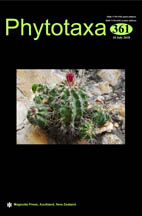Abstract
A novel holomorphic Fusarium species, F. celtidicola is introduced in this study, with evidence from morphological characterisation and phylogenetic analyses. The new species is described and discussed in relation to similar taxa. Analysis of RPB1 and RPB2 sequence data support the placement in Fusarium and its distinctiveness as a new species.

